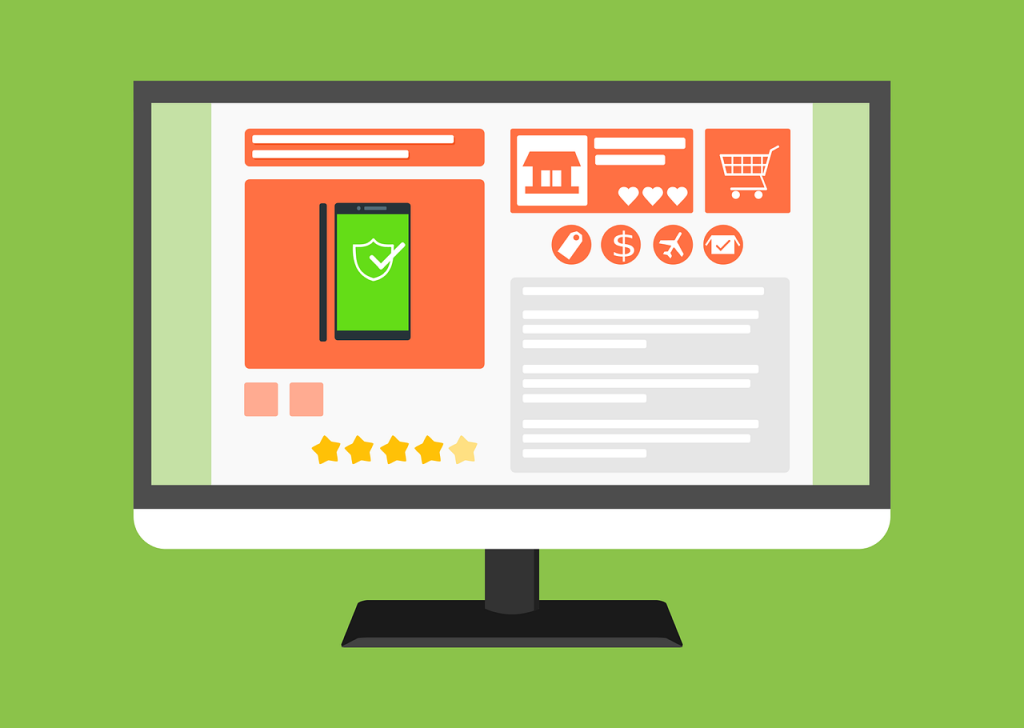Why Marketing Automation Is Good for Your Business?
For startups, marketing plays a major role in the promotion of the business and also in generating prospects for possible sales. Marketing campaigns such as email marketing provide more sources of leads for the sales team to work on. However, manually doing the task of emailing each and every lead is not only seriously laborious but also equally exhaustive in nature.
However, with the help of technology, just as it has helped manufacturing industries, automation of simple tasks is made possible and achievable. Not only does this speed up the process, it also saves the man hours needed in doing the job. Thus, using automation to the advantage of marketing has never been a very desired and sought-after process for most businesses these days.

What Is Marketing Automation?
This question has been more frequently asked by marketers and business owners, and a lot have been piqued by the same. Marketing automation refers to software platforms and technology that has been created specifically for effective marketing on different online social media platforms, sites, and channels—especially for emails—to automate repetitive tasks.
Marketing automation, though, is in no way a definitive means to an end. Effectively managing factors involved in marketing automation is key to success.
 [
[
There has to be balance in finding out which strategies are working for your business and which ones are not. Marketing automation helps in cases where simple, repetitive tasks have to be handled by personnel who could be otherwise working on other important assignments.
Automation frees up people who would have otherwise been bogged down with simple acts like forwarding thousands of outreach emails and such.
The Types of Marketing Software?
1. Marketing Intelligence
Marketing intelligence software are typical tracking analytics software used commonly in social media, emails, and webpages. What it does is track individual behavior of a potential customer from the sites they visit, such as social media, email clients, and other webpages.

It records posts they follow, search terms they use for navigating to a specific website, or email links clicked in an opened email. From this data, interest in a particular market is determined. That interest is therefore catered to with a proper nurturing program to address and develop that specific interest in the market. Does spyware ring a bell?
2. Marketing Automation
Marketing automation software focuses more on converting potential leads into sales-ready leads. This process includes prospecting, qualifying of the leads, and nurturing the leads through to the buy.

Marketing automation was first used only in email marketing and then later further developed uses in other areas of marketing and the sales process.
3. Advanced Workflow Automation
This further improves the automation of marketing processes, including budgeting and planning, approvals, and workflow, work schedule for marketing, asset creation and management, and anything in relation to the overall operational efficiency of internal marketing.
This software system is controlled by a CRM (customer relationship management) administrator that links to manual input from internal sales and marketing people, such as seen in email marketing campaigns.

Ways to Apply Marketing Automation
1. For Social Media Marketing
Social media marketing is a type of Internet marketing that makes use of creating and sharing content on social media in connection to marketing and branding targets. These are activities that provide content for the purpose of creating customer interaction.
2. For Email Marketing
Sending of a commercial message to a group of people through the use of electronic mail is the basic gist of email marketing. Email marketing is geared towards building customer loyalty and trust in a product or company. Essentially, it promotes brand recognition as well based on your email opt-in rate. Email marketing makes an efficient way for companies to remain connected to customers and at the same time promoting business.
3. For Lead Generation
Described as the process of stimulating and capturing interest in a market, thereby developing the sales pipeline or funnel. Simply put, lead generation is a way of warming up potential customers to your business and having them eventually buy your product or service.
4. Lead Nurturing
The process of lead nurturing happens at every step of the sales pipeline. It focuses more on the marketing and communication efforts exerted, listening to prospective needs and providing information or answers that they require. To successfully nurture a lead, the following guidelines are recommended:
Targeted content – Quality content is created and aimed at your potential customers’ interests, increasing that interest in relation to an eventual sale. The key is understanding unique buyer personalities and making assorted target content designed to nurture each unique personality in a segmented market. Equally important is having a platform that can help you identify and segment unique buyer personalities in relation to making the business profitable.
Multi-channel lead nurturing – Obviously, you do not cater to only one customer, so it is but natural to try different methods of targeting leads. There exists different types of lead nurturing techniques that aid in eventually landing that sale, namely:
- Email marketing, as described above.
- Social media engagement. Most opt to ignore emails but social media seldom gets the snub and is almost always being updated. Reach out to your leads, engage them in messages or chats or even simple comments. Cultivating relationships reaps benefits for the future.
- Dynamic website content. Having good content on your site is not enough. Your content must be fresh. Meaning it depicts the current happenings in your business and with your customers. Let customers know you are actively involved with your site and with the customers.
- Retargeting ads. These banner ads focus on getting leads to act through repetition. Being constantly reminded of something may be annoying at times but it is a very effective method of driving sales once your message sinks into the target’s psyche.
- Mobile marketing automation. Most Web traffic come from mobile devices. Your site should not only be mobile friendly (i.e., use tools for responsive design) but become the customer’s mobile best friend. Your site should look good on mobile and perhaps employ text message marketing. Better yet, indicators from your site should alert sales and have them call a customer that just visited your site.
- Multiple contact. Statistics from research indicate that a prospect on average gets 10 marketing points of contact from the time they are at the top entry of the sales funnel down to being closed and won customers. Surprisingly, most marketers list only an average of 5 points of contact in their lead-nurturing programs. As shown from research, successful lead-nurturing programs provide content that addresses issues for the customer at certain points of the journey through the sales funnel. Each point of contact further increases the chances of a prospect sale while also being informative enough to answer the customer’s questions or issues.
 [ns_button size=”md” type=”source” value=”Source” href=”
[ns_button size=”md” type=”source” value=”Source” href=”
- Effective follow-ups. Effectively following up within 5 minutes after any inbound lead from a website conversion accounts for 21 times better odds of having a prospect qualifying for the sales process versus anything after that time. Timely calling up your prospect within five minutes of Web conversion accounts to a higher chance of likely qualifying the lead for the sales process. Slower response rates results to lower chances of getting that prospect closer to a sale.
- Personalized emails. In all automated marketing strategies, email marketing continues to be the most effective strategy for nurturing leads. And personalized emails seem to be working significantly well and produce way better results. Personalized emails help deliver the right message to the right individuals at the right time. Personalized emails are often made to be sent once an individual visits a certain page on your site, clicks on the links in your email, downloads your content, or exhibits a certain level of engagement. There are many ways of personalizing your emails and delivering them in a timely manner makes a big difference which is why automation greatly helps in this aspect.
- Lead scoring. Lead scoring based on content and engagement accounts for an effective tactic in nurturing leads. Ranking prospects determines which leads need to be directly followed up and which ones need to be further nurtured to the next level in the sales funnel. Having a priority list helps in delegating tasks and also segregating those more important leads from the lesser ones.
- Sales and marketing alignment. Another factor that increases prospects further down the sales funnel is the alignment of responsibilities between sales and marketing groups. The shared responsibilities and goals provide accountability for both teams which in turn allow for a higher chance of lead conversion. By the numbers, 89% of companies that align their sales plan and marketing team’s effort in lead nurturing account for noticeable increases in terms of the number of produced sales opportunities.
5. Metrics and Analytics
Metrics and analytics provide a solid and tangible way of assessing the effectiveness of automated marketing. Generally, there are 4 types of metrics that are basis for gauging the effectiveness of an automated marketing tool or strategy.
Type 1: Activity metrics – The account of the basic activities done in conjunction to your automated marketing strategy.
- Number of sent emails – Main point. If there are not many emails being sent through your automated software then your team probably isn’t using your new investment. Potential causes would probably be in how to actually send emails using the automated software.
- Setup of behavioral triggers – Behavior triggers are set based on personalized insight into how customers behave in your site. Customizing the emails based on those triggers help in delivering better quality content to the customer.
 [
[
Type 2: Response metrics – Checking on how your customers feel upon reception of automated responses gives you an idea of how effective your automated marketing is. Asking for feedback provides better insight on the following particular metrics:
- Click-through and open rates – These metrics signify whether your emails are effective and are made well enough for the customers to open them or proceed to click through the links in them. With this, determining improvement should be easily known.
- Site traffic – Having high click-through rates should spell an equally high traffic rate. By checking on the sources, you should be able to identify if traffic is being drawn by your emails or other sources.
- Re-conversions – Re-conversions happen when leads are driven to convert (buy) again from the offers being made in your automated emails. Analysis from this metric would suggest re-assessing your triggers and email content.
- Unsubscribe rate – Unsubscribe rate is another good metric to watch in determining if your automation marketing is working or if your customers are responding to it.

Type 3: Efficiency metrics – Having impact on your important marketing metrics indicates the effectiveness of your automation marketing strategy to be working or not. The following metrics should see significant positive impact:
- Marketing qualified leads made through lead nurturing – These are leads that are highly probable in becoming a customer. Effective lead nurturing should see this value increase.
- Cost per customer – Having a lower value for this metric is a result of an effective nurturing lead strategy. This means that there are fewer leads being wasted at the top funnel since most are being generated into customers thus reducing marketing cost due to a sales conversion.
- Sales-accepted leads – Creating more conversions result to better intel in getting leads. It generally helps in classifying more “educated” leads as a result to previous conversions.

Type 4: Value metrics – Value metrics as the word itself implies are metrics taken right at the end of the sales process. Revenue. Thus, making you aware how much you are actually getting in contrast to the different methods you are applying.
- Generated revenue – There is no other more blatant indicator of growth or improvement than the revenue you get from the sales funnel. Along with an average sales price, this would be the main indicator if your automated marketing is working for you or against you.
- Revenue vs. investment – As with any business model, the bottom line in calculating actual gain would be from deducting all your investment costs to the revenue you are generating after the implementation of an automation program. Plain and simple. If the value here is negative, then you definitely have to go back to the drawing boards and revise your automation program.
- Close rate on marketing-sourced leads – A definite way of showing that your automation program is working is by getting a high close rate to the sourced leads that your marketing automation has provided. Getting a high close rate proves value in your marketing efforts to come close to any possible sale.

Benefits of Marketing Automation
Citing all benefits of employing automation in marketing would be outright exhaustive. If it has not been obvious enough through out the article then let us reiterate the major benefits a business gains with the effective and proper use of marketing automation.
- Saving time – Perhaps the most significant benefit that a business gets from automation is saving time and man hours. As businesses employ different marketing campaigns, repeat activities account for a large amount of time which with the help of marketing automation, marketing staff can focus on more important jobs instead of manually sending out emails and other tasks.
- Efficiency – Not only is time saved in having marketing automation work for your business, labor costs also go down resulting from not doing or improving on traditional manual processes. Consequently, as a result for labor costs going down, efficiency goes up since employees now work better and processes are improved to be much faster aiding the employees to do more with the time they have at work.
- Better management of marketing channels – Businesses are no longer limited at dealing with a single marketing channel at a time. With the technology nowadays, more channels for which to market your business are opening thereby providing more opportunities and more potential customers. Keeping track of everything is becoming a monstrous task unbecoming and not fitting for a mere mortal to handle. Thanks to automated marketing, keeping tabs of the different marketing channels is made possible. Now you can schedule a meeting while posting tweets and uploading product videos.
- Gathering of data – While it was only possible to gather emails from visitors actually getting into your website, now you have to contend with other visitors to your social media accounts thereby effectively increasing your reach on potential customers. Multiple channels offer then multiple chances of qualifying leads and adding more potentials to your sales funnel. Now lies the challenge in processing all of these raw data and qualifying each and every one in preparation to your sales funnel. Now you’ve got your work cut out for you.
- Integration into your CRM (customer relationship management) software – By integrating your data captured in the automated marketing process with your CRM software, you no longer have to worry about any leads doing a disappearing act after a few not-so-good calls or contact. Sleep well. Your leads are safe and sound.
- Consistency – With all your marketing efforts, promoting a consistent and unified brand tone is achieved. Automation helps you tailor each user’s experience depending on the personalization settings you have incorporated giving them a more likely enjoyable and satisfying marketing experience that should in all likelihood translate into conversion or a sale.

Having said all that, automated marketing clearly outweighs any disadvantage it may pose to your business. Clearly, it is only in the fine-tuning of the processes involved in your marketing automation where you will possibly find hurdles. Now, what else are you still waiting for? Automated marketing is the wave of the future. Or at least it is with the indications and results. But don’t take my word for it. Take it for a spin and see if you benefit from the ride.

